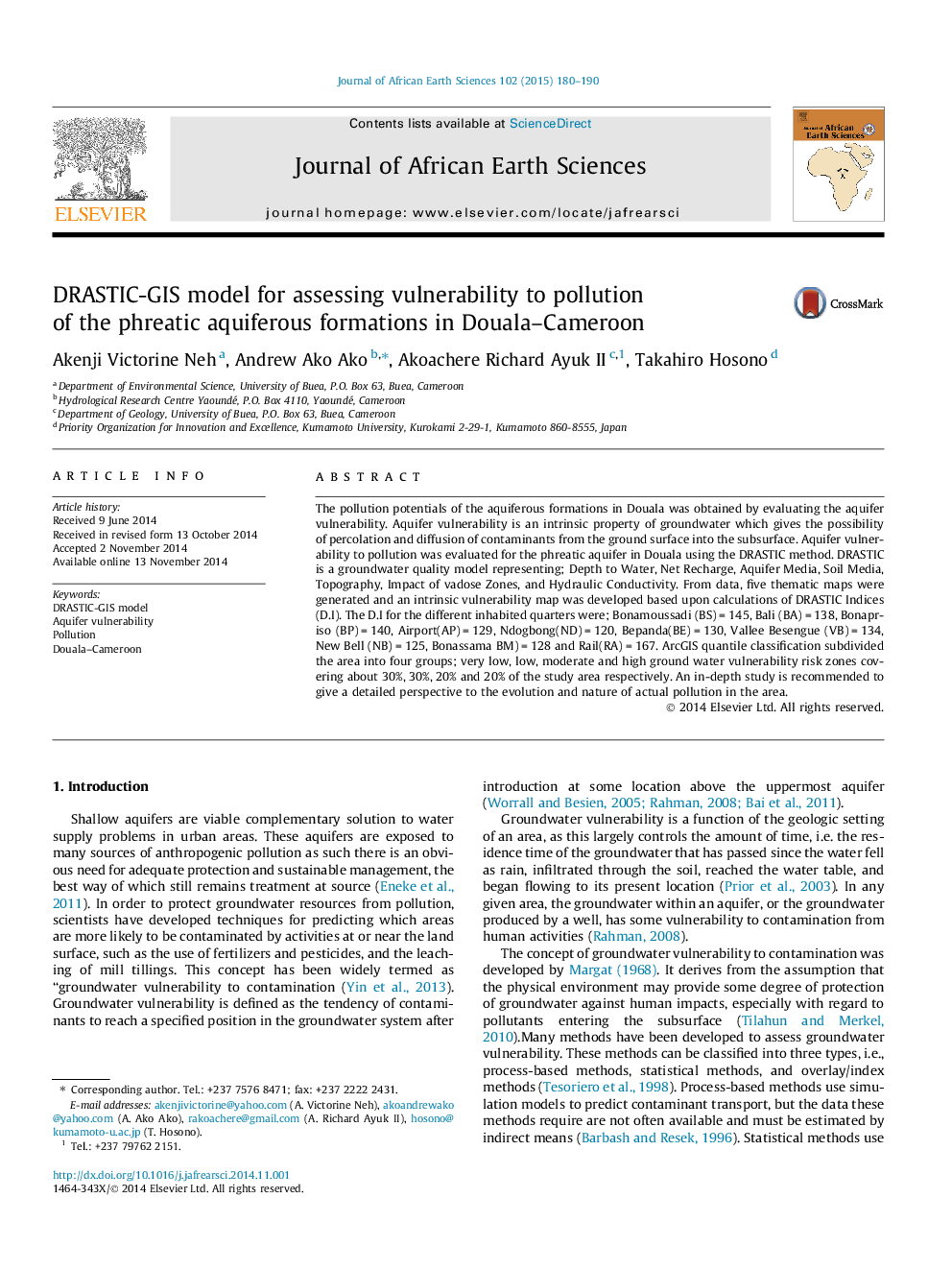| Article ID | Journal | Published Year | Pages | File Type |
|---|---|---|---|---|
| 4728620 | Journal of African Earth Sciences | 2015 | 11 Pages |
•Phreatic aquifer vulnerability in Douala is established using DRASTIC-GIS.•Vulnerability assessment index vary from intermediate to high susceptibility.•Rail neighborhood has the highest aquifer vulnerability.
The pollution potentials of the aquiferous formations in Douala was obtained by evaluating the aquifer vulnerability. Aquifer vulnerability is an intrinsic property of groundwater which gives the possibility of percolation and diffusion of contaminants from the ground surface into the subsurface. Aquifer vulnerability to pollution was evaluated for the phreatic aquifer in Douala using the DRASTIC method. DRASTIC is a groundwater quality model representing; Depth to Water, Net Recharge, Aquifer Media, Soil Media, Topography, Impact of vadose Zones, and Hydraulic Conductivity. From data, five thematic maps were generated and an intrinsic vulnerability map was developed based upon calculations of DRASTIC Indices (D.I). The D.I for the different inhabited quarters were; Bonamoussadi (BS) = 145, Bali (BA) = 138, Bonapriso (BP) = 140, Airport(AP) = 129, Ndogbong(ND) = 120, Bepanda(BE) = 130, Vallee Besengue (VB) = 134, New Bell (NB) = 125, Bonassama BM) = 128 and Rail(RA) = 167. ArcGIS quantile classification subdivided the area into four groups; very low, low, moderate and high ground water vulnerability risk zones covering about 30%, 30%, 20% and 20% of the study area respectively. An in-depth study is recommended to give a detailed perspective to the evolution and nature of actual pollution in the area.
